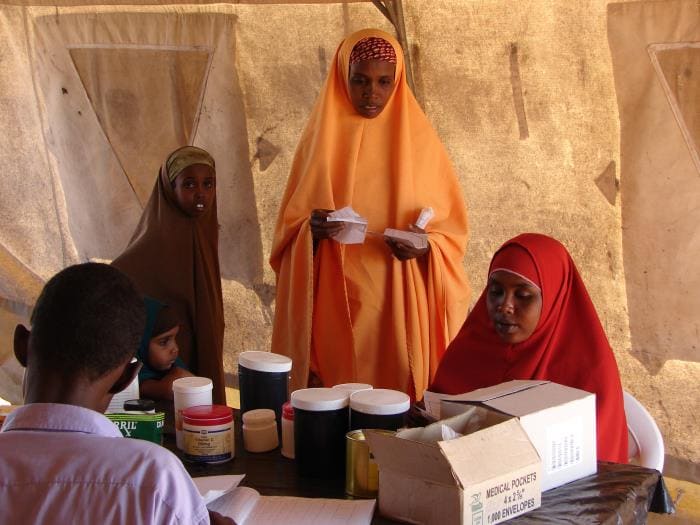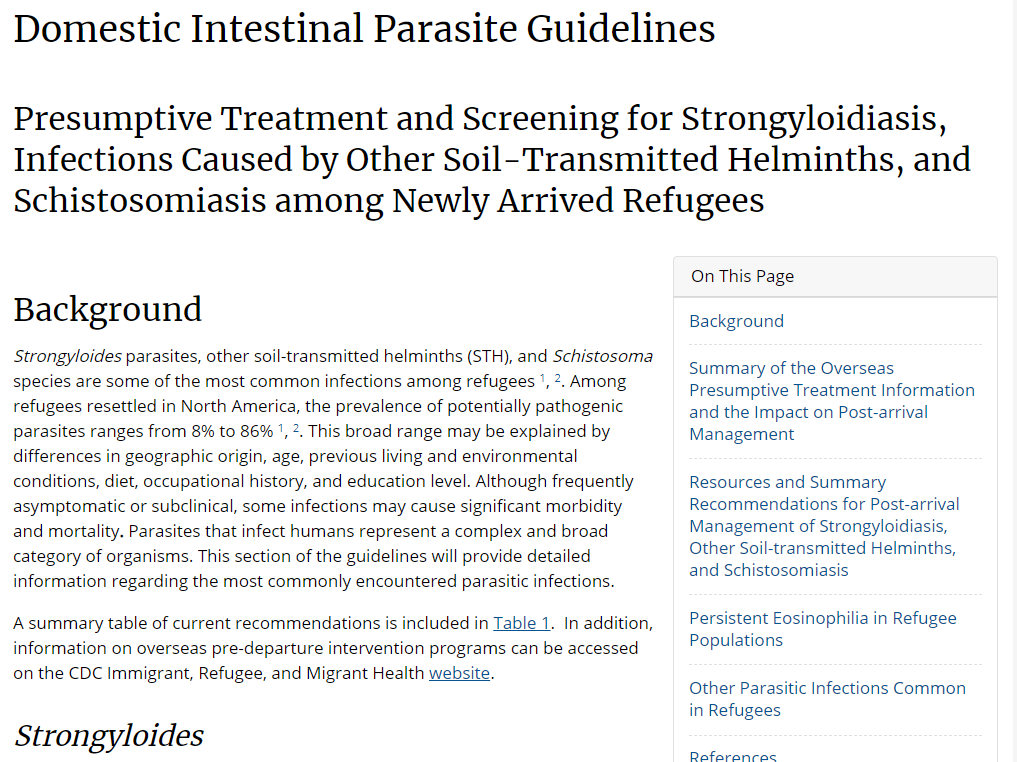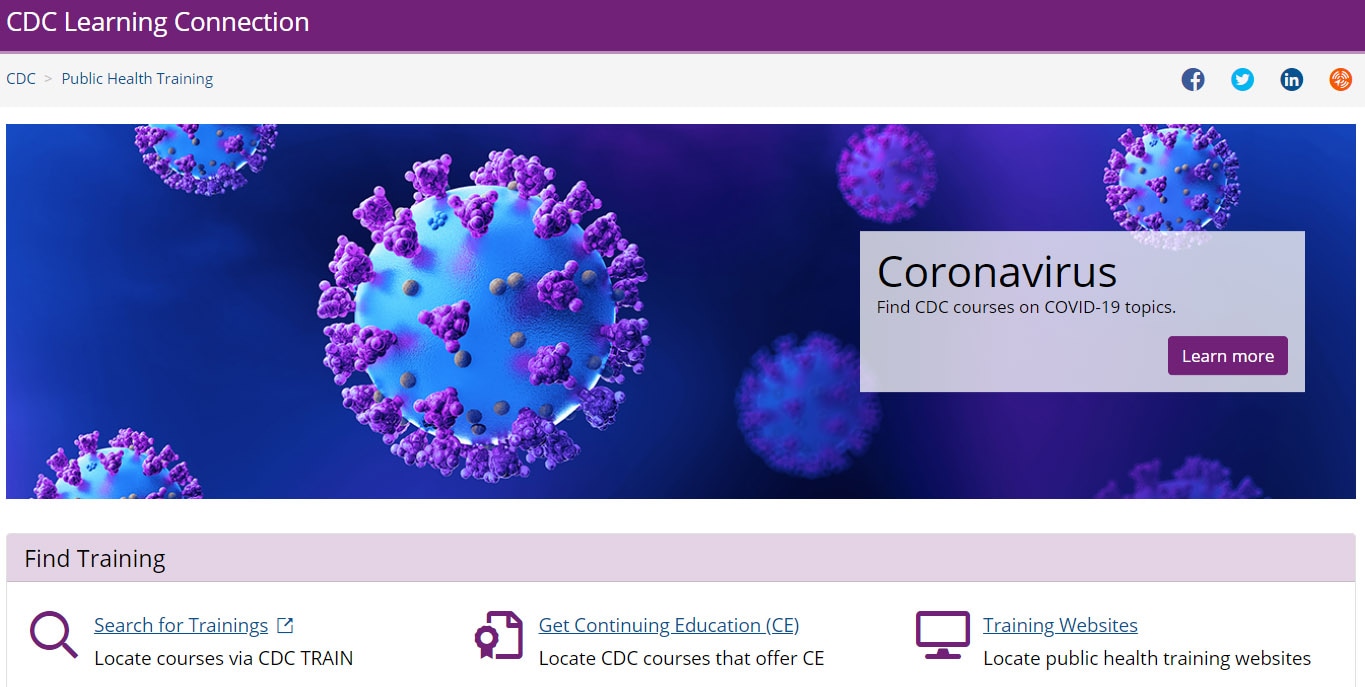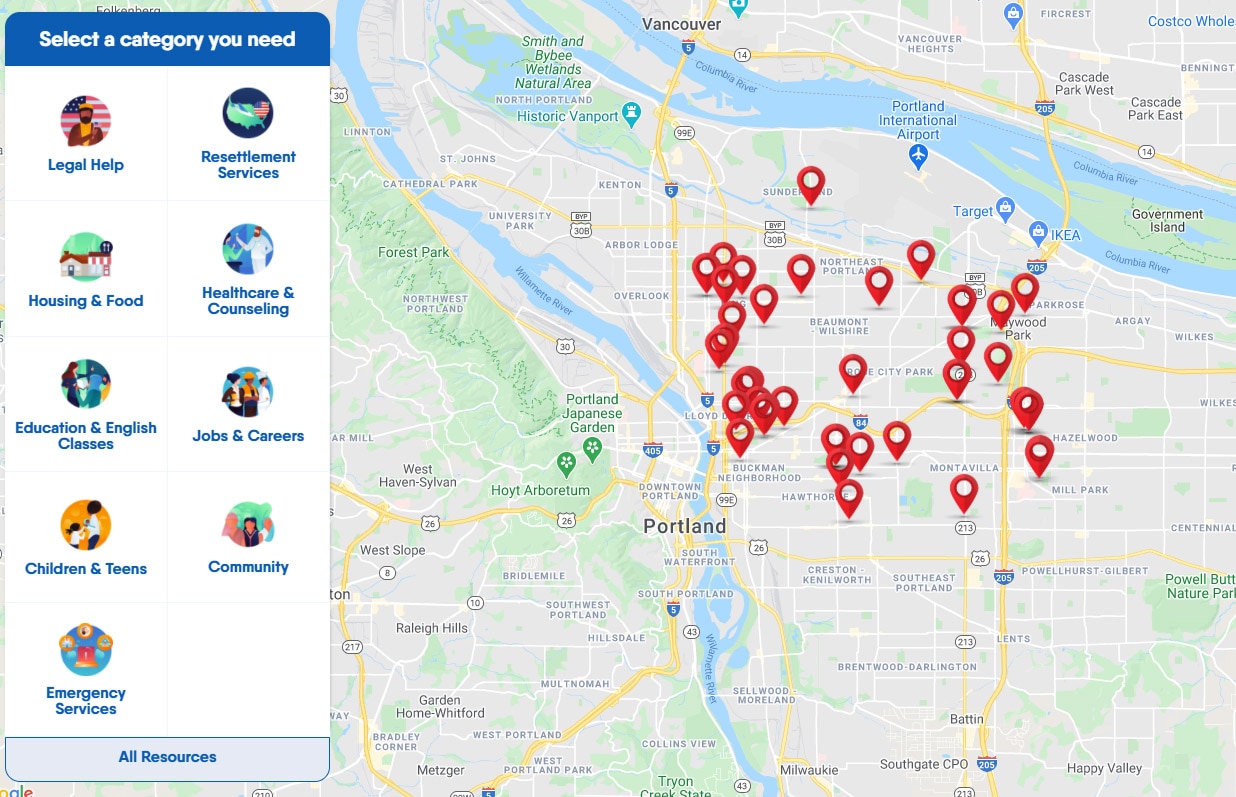Continue to check our website for further updates on when we will reopen. When the museum reopens, all visitors will need to make reservations at least a week in advance. Walk-in visits are no longer permitted.
Teen Newsletter: February 2021 – Refugee Health
The David J. Sencer CDC Museum (CDCM) Public Health Academy Teen Newsletter was created to introduce teens to public health topics. Each month will focus on a different public health topic that CDC studies. Newsletter sections: Introduction, CDC’s Work, The Public Health Approach, Special Feature, Out of the CDC Museum Collection, and Activities.
Be sure to join our live Newsletter Zoom on February 23, 2021, at 8pm EST, and check out all the activities (digital scavenger hunt—Goosechase, Zoom, social media challenge, and Ask a CDCer) at the end of each newsletter. Join in on the fun and win some prizes! Also, be on the lookout for the pre-Zoom game (Kahoot) that will be emailed the day of the Zoom.
We are excited to announce a recently added newsletter activity prize category: Future CDCer, learn more below.
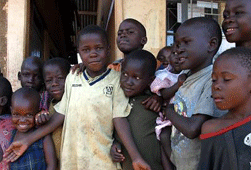
Under the Immigration and Nationality Act (INA), a refugee is an alien who, generally, has experienced past persecution or has a well-founded fear of persecution on account of race, religion, nationality, membership in a particular social group, or political opinion. Individuals who meet this definition may be considered for either refugee status under Section 207 of the INA if they are outside the United States (U.S.), or asylum status under Section 208 of the INA, if they are already in the U.S.
Watch this video from the Secretary of Homeland Security to see exactly what a potential refugee goes through to resettle in the U.S.
The refugee process can be lengthy:
- Refugees Flee their Homeland: Because of a well-founded fear of persecution, a refugee will flee his/her home country.
- Refugees Seek Protection: A refugee seeks protection from the United Nations High Commissioner for Refugees (UNHCR). Protection can come from one of three possible solutions:
- Return to the home country when homeland is deemed safe.
- Settle into the country to which they fled.
- Resettle permanently into a third country.
- Access to the U.S. Refugee Program: A refugee can access the U.S. Refugee Program through an application process that includes referrals.
- Permanent Resettlement into a Third Country: If permanent resettlement is deemed a possibility, the refugee is interviewed in his/her current place of residence by U.S. Citizenship and Immigration Services (USCIS) to see if he/she will be granted permission to enter the U.S. Refugee Program.
- Approval: If a refugee is approved by USCIS, the case is allocated to one of nine domestic resettlement agencies.
- Resettlement: The refugee’s case is sent to a local office in the U.S., where help is found for the refugee. Assurance is based on an analysis of available resources in each community to meet the needs of specific refugees.
This newsletter will focus on the health issues surrounding the refugee resettlement process, which is part of steps 3 and 4 in the list above.
As a world leader in health promotion and disease prevention, CDC works with immigrant, refugee, and migrant groups to improve their health by:
- Providing guidelines for disease screening and treatment in the U.S. and overseas
- Tracking and reporting disease in these populations
- Responding to disease outbreaks in the U.S. and overseas
- Advising U.S. partners on health care for refugee groups
- Educating and communicating with immigrant and refugee groups and partners
This work occurs in CDC’s Division of Global Migration and Quarantine.
IRMH’s goal is to promote and improve the health of immigrants, refugees, and migrants and prevent the importation of infectious diseases and other conditions of public health significance into the U.S. by these groups.

This work can be divided into two categories: 1) work completed overseas before refugees arrive to the U.S., and 2) work that happens once refugees are settled into their U.S. communities. Let’s look at the work that happens within these two categories:
Overseas
- IRMH develops and implements the Technical Instructions, or medical screening guidelines, used by overseas panel physicians who are responsible for conducting the medical examinations for U.S.-bound refugees. The Technical Instructions consist of medical screening guidelines, which outline in detail the scope of the medical examination. The purpose of the medical examination is to identify, for the Department of State and the US Citizenship and Immigration service, applicants with medical conditions of public health concern.
- IRMH also maintains an anonymous collection of surplus blood samples from overseas screenings called the Migrant Serum Bank (MSB). Scientists from around the world can request to use the samples for research projects.
Domestic
- The Domestic Refugee Health Program facilitates collaboration with state and local health department partners to improve the health care and monitor medical conditions of refugees after their arrival into the U.S.
- IRMH also maintains the Electronic Disease Notification System (EDN), which notifies states and local health departments of the arrival of refugees to their jurisdictions. EDN provides states with overseas medical screening results and treatment follow-up information for each refugee.
Public health problems are diverse and can include infectious diseases, chronic diseases, emergencies, injuries, environmental health problems, as well as other health threats. Regardless of the topic, we take the same systematic, science-based approach to a public health problem by following four general steps.
1. Surveillance (What is the problem?)
In public health, we identify the problem by using surveillance systems to monitor health events and behaviors occurring among a population.
For this newsletter’s topic we will use an example of a public health intervention for a specific refugee population described in an article written by CDC Refugee Health professionals published in The American Journal of Tropical Medicine and Hygiene (AJTMH). Read the entire article.
Data are often collected from refugees upon their arrival to the U.S. In 2007, blood sample analysis showed that 44% of refugee arrivals from Sudan, a country in northeastern Africa, were infected with Strongyloides.
Shown above, Strongyloidiasis is a parasitic disease caused by nematodes, or roundworms, in the genus Strongyloides. The parasites enter the body through exposed skin, such as bare feet. Most people who are infected with Strongyloides do not know they are infected and have no symptoms. Others, particularly those who are on some immunosuppressive therapies, may develop a severe form and, if untreated, become critically ill and possibly die.
2. Risk Factor Identification (What is the cause?)
After we’ve identified the problem, the next question is, “What is the cause of the problem?” For example, are there factors that might make certain populations more susceptible to disease, such as something in the environment or certain behaviors that people are practicing?
CDC works with partners to administer presumptive medicine to refugees. Presumptive medicine is medicine given to prevent infections regardless of if the person has been tested for the disease or not. Strongyloidiasis is most common in tropical or subtropical climates. For refugees coming from an area of the world where certain infections are common, it is more cost effective and efficient to treat everyone for that infection than it is to test and treat individuals. Strongyloides can be treated with a drug called ivermectin, and that drug is part of the recommendation for sub-Saharan African refugees. However, it is not recommended for refugees from central and west Africa. In these two parts of Africa another parasite, Loa loa, is endemic, or present. Persons who have been exposed or are infected with Loa loa can develop encephalopathy, or brain damage, when they take ivermectin, the medicine to treat Strongyloides. This can lead to a gap in treatment creating a higher risk for untreated Strongyloides infections in central and west African refugees.
3. Intervention Evaluation (What works?)
Once we’ve identified the risk factors related to the problem, we ask, “What intervention works to address the problem?” We look at what has worked in the past in addressing this same problem and if a proposed intervention makes sense with our affected population.
In our example, one possible method of intervening might be to increase medical provider knowledge in areas in the U.S. where refugees are resettled. Since treating refugees before they come to the U.S. with ivermectin carries a risk of brain damage, it is important for doctors in the U.S. to recognize these tropical infections in refugee patients. Since these are not common infections in the U.S., many doctors may not be familiar with these infections, which can lead to misdiagnosis.
4. Implementation (How did we do it?)
In the last step, we ask, “How can we implement the intervention? Given the resources we have and what we know about the affected population, will this work?”
Treatment of tropical infections is part of the recommendations CDC provides through the Refugee Health Guidelines mentioned in the CDC’s Work section of this newsletter.
Many domestic U.S. medical providers may not be familiar with the recommendations, suggesting that additional medical provider training is necessary. One of CDC’s core functions is training. The CDC Learning Connection helps public health and health care professionals stay informed about quality trainings from CDC, other federal agencies, and federally-funded partners.
Through training and web resources, CDC is able to provide topic specific materials to medical providers, who in turn can treat refugees.

Each refugee resettlement community operates differently, but many resettlement agency providers are connected with their county health departments, federally qualified health centers (FQHCs), and culturally competent private medical providers in their areas. Refugee health clinics typically have waiting rooms where several refugee patients may be waiting with their families at the same time for appointments. One example of a COVID-19 resource that a provider might have in their waiting room is – “Contact Tracing: Do your part to keep your family, friends, and community safe.”
Languages: English | Español | Chinese | Vietnamese | Korean | Marshallese
Change to: Look for the social media challenge below to engage with the refugee COVID-19 resources!
As you can see, using The Public Health Approach helps public health professionals identify a problem, find out what is causing it, and determine what solutions/interventions work.
While CDC is the premier public health agency in the U.S., there are many other organizations that work in various aspects of the refugee experience, including domestic resettlement agencies. These agencies work to assist refugees through their resettlement process. Each incoming refugee is assigned to one of the nine organizations that can help them adjust to life in the U.S.
One of these domestic resettlement agencies is the International Rescue Committee (IRC). According to its website, “The International Rescue Committee responds to the world’s worst humanitarian crises and helps people whose lives and livelihoods are shattered by conflict and disaster to survive, recover and gain control of their future. In more than 40 countries and over 20 U.S. cities, our dedicated teams provide clean water, shelter, health care, education and empowerment support to refugees and displaced people.”
Organizations like IRC can give refugees direct access to legal help, resettlement services like housing, health care, jobs, and other important resources, as you can see from the image below.
IRC and many other organizations provide opportunities for people to participate and volunteer – take a look or search for volunteer opportunities with any of the other refugee resettlement agencies.
This month we are featuring historic photographs related to refugee health and CDC. Refugee entry to the United States started after the U.S. government passed the 1952 Immigration and Nationality Act. This act has been amended many times. In 1967, CDC became involved in quarantining of persons traveling to the U.S.
Now let’s turn to the Vietnamese War, which ended in April 1975. The conclusion of the war precipitated the Vietnamese boat people (refugees who fled Vietnam by boat and ship at the end of the war) and the larger Indochina refugee crisis. Between 1975-1998, 1.2 million refugees from Vietnam/Southeast Asia resettled in the U.S.
These images are from the CDC Museum Collection and they document that, in 1975, CDC began to assist the U.S. government with visa and entry screening, immunization, and follow up regarding the health of Vietnamese refugees in the U.S. These images show Vietnamese refugees at Camp Pendleton, a Marine base in California.
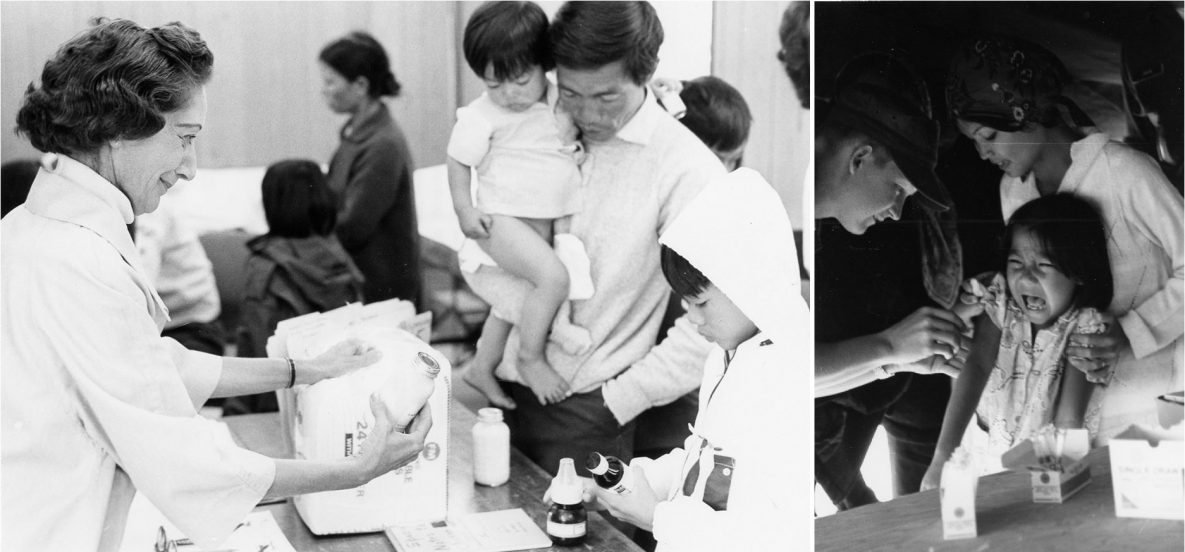
Left: Red Cross volunteers aid in dispensing medication to Vietnamese refugees being processed in Camp Pendleton, California.
Right: Young girl screams as a Navy Corpsman gives her a shot. She is one of the many refugees being vaccinated during processing in Camp Pendleton, California.
Maj G.L. Gill, 1975
Official Marine Corps Photographs
All February 2021 Teen Newsletter winners will be announced 02/23/21 during the Zoom – see individual deadlines below, as applicable.
**Recently Added** The CDC Museum Public Health Academy Teen Newsletter has a new newsletter activity prize category: Future CDCer
To qualify for Future CDCer, you must participate in all newsletter activities (scavenger hunt—Goosechase, Zoom, social media challenge, Ask a CDCer, and pre-Zoom game—Kahoot). All that qualify will be entered into a prize drawing for a CDC Museum Public Health Academy t-shirt.
*The following newsletter activities: Scavenger Hunt, Zoom, and Social Media Challenge are available for your participation anytime – even after deadlines. To be eligible for prizes you must complete activities by the deadline.
Want to do a fun digital scavenger hunt?
Time: ~20 min to complete
Complete all missions by 02/22/21 11pm EST, for prize drawing.
See below for more details.
Want to learn more from CDCers who work on Refugee Health?
Join us for an exclusive Zoom on 02/23/21 at 8pm EST.
Advance registration required. All who register by or on 02/22/21 11pm will be entered into a prize drawing.
Watch the refugee health Teen Talk.
Help CDC promote refugee resources related to COVID-19!
Pick your favorite resource and post it on your social media with #CDCTeenNewsletter
Submit a screenshot of your post by 02/22/21 11pm EST to be entered into a prize drawing.
Click here for instructions and to submit your post.
Do you have a question for a CDCer who works on Refugee Health?
Submit your question for the Refugee Health experts who will be joining the Zoom on 02/23/21 at 8pm EST.
If your question is selected, you will get a shout out on the live Zoom and a chance to win a prize.
Please do not submit questions that are answered by reading this newsletter.
Click here to submit your question(s) by 02/22/21 11pm EST.
CDCM PHA Teen Newsletter Scavenger Hunt
February 2021
Step 1: Download the GooseChase iOS or Android app
Step 2: Choose to play as a guest
Step 3: Enter game code – 6765KZ
Step 4: Enter password – CDC
Step 5: Enter your email as your player name (this is how we will contact you if you are the prize winner)
Step 6: Go to Immigrant and Refugee Health to complete your missions
Tips for Winning:
- All answers are found on the website, see Step 6.
- Open-ended answers and photo submissions are evaluated for accuracy.
- Complete all the missions by 02/22/21 11pm EST, to be entered into a drawing for a prize.
- Make sure to make your player name your email.
Have fun!
